GHRC DAAC will attend the 2023 Fall Meeting of the American Geophysical Union (AGU) held in San Francisco December 11-15. GHRC-related posters and presentations include the following eLightning talks, presentations, and poster sessions.
eLIGHTNING TALK
Navaneeth Rangaswamy Selvaraj1, Geoffrey T Stano2, Sanjog Thapa3, Will Ellett1 and Aaron S Kaulfus4, (1)University of Alabama in Huntsville, Huntsville, AL, United States, (2)Global Hydrometeorology Resource Center (GHRC) Distributed Active Archive Center (DAAC), University of Alabama in Huntsville, Huntsville, United States, (3)University of Alabama in Huntsville, Huntsville, United States, (4)NASA Marshall Space Flight Center, Huntsville, AL, United States
eLightning Theater IV, Hall D - South (Exhibition Level, South, MC)
Tuesday, 12 December 2023: 18:12 - 18:15
PRESENTATION
IN31A-01_Formulation of NASA’s Airborne and Field Data Resource Center_
Stephanie Mullins Wingo1, Sara H Lubkin2, Jennifer Brennan3, Deborah K Smith4, Michele Thornton5, Megan Elizabeth Buzanowicz6, Bruce Wilson7, Geoffrey Stano8, Leigh Sinclair8 and Gao Chen9, (1)NASA IMPACT / UAH, Huntsville, United States, (2)NASA Goddard Space Flight Center, Greenbelt, MD, United States, (3)ADNET Systems Inc. , Goddard Space Flight Center, Greenbelt, United States, (4)University of Alabama in Huntsville, NASA IMPACT, Huntsville, AL, United States, (5)Oak Ridge National Laboratory, Climate Change Science Institute and Environmental Sciences Division, Oak Ridge, TN, United States, (6)ADNET Systems, Inc., Bethesda, United States, (7)Oak Ridge National Laboratory, Oak Ridge, United States, (8)University of Alabama in Huntsville, Huntsville, AL, United States, (9)NASA Langley Research Ctr, Hampton, United States.
2014 - West (Level 2, West, MC)
Wednesday, 13 December 2023: 10:39 - 10:48
POSTER SESSIONS
H23U-1846 Super-Resolution Techniques for Space-Based Precipitation Datasets
John Malone Beck1, Sara J Graves2, Charles Collins1 and Kelsey White3, (1)University of Alabama in Huntsville, Huntsville, AL, United States, (2)Univ. of Alabama/Huntsville, Huntsville, United States, (3)University of Alabama in Huntsville, Huntsville, United States
Poster Hall A-C - South (Exhibition Level, South, MC)
Tuesday, 12 December 2023: 16:10 - 20:30
Geoffrey T Stano1,2, Navaneeth Rangaswamy Selvaraj3, Alan Subedi4, Deepak Acharya4, Will Ellett3 and Aaron S Kaulfus5, (1)Organization Not Listed, Washington, DC, United States, (2)Global Hydrometeorology Resource Center (GHRC) Distributed Active Archive Center (DAAC), University of Alabama in Huntsville, Huntsville, United States, (3)University of Alabama in Huntsville, Huntsville, AL, United States, (4)University of Alabama in Huntsville, Huntsville, United States, (5)NASA Marshall Space Flight Center, Huntsville, AL, United States
Poster Hall A-C - South (Exhibition Level, South, MC)
Wednesday, 13 December 2023: 16:10 - 20:30
Leigh Sinclair1, Geoffrey T Stano2, Will Ellett1, Daine Wright3, Eddie Campos4, Davis Gaunt5 and Aaron S Kaulfus6, (1)University of Alabama in Huntsville, Huntsville, AL, United States, (2)Global Hydrometeorology Resource Center (GHRC) Distributed Active Archive Center (DAAC), University of Alabama in Huntsville, Huntsville, United States, (3)Oak Ridge Associated Universities Inc., Oak Ridge, TN, United States, (4)University of Alabama in Huntsville, ITSC, Huntsville, AL, United States, (5)University of Alabama in Huntsville, Huntsville, United States, (6)NASA Marshall Space Flight Center, Huntsville, AL, United States
Poster Hall A-C - South (Exhibition Level, South, MC)
Thursday, 14 December 2023: 10:30 - 14:50
Sushant Mehan, South Dakota State University, Assistant Professor of Water Resources Engineering, at the Department of Agricultural and Biosystems Engineering, Brookings, United States, Leigh Sinclair, Global Hydrometeorology Resource Center (GHRC) Distributed Active Archive Center (DAAC), University of Alabama in Huntsville, Huntsville, United States, Daniel P Ames, Brigham Young University, Provo, UT, United States and Geoffrey T Stano, NASA Short-term Prediction Research and Transition Center (SPoRT) / ENSCO, Inc., Huntsville, United States
Poster Hall A-C - South (Exhibition Level, South, MC)
Wednesday, 13 December 2023: 10:30 - 14:50


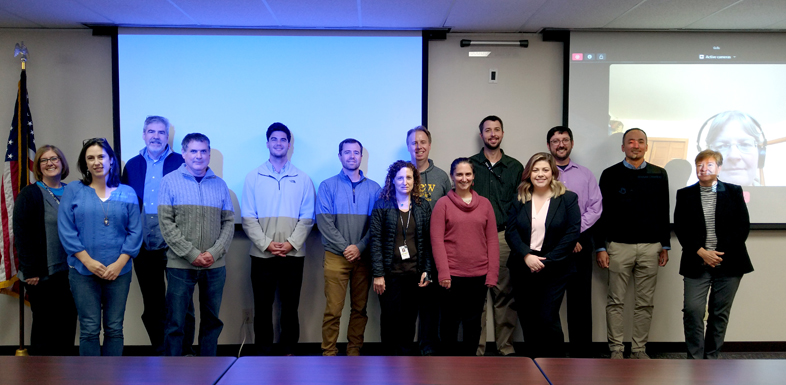
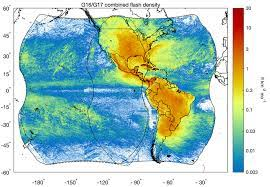 The Global Hydrometeorology Resource Center (GHRC) DAAC has successfully published the Geostationary Lightning Mapper (GLM) Level 3 gridded products dataset. This publication is significant for several reasons. First, this is the culmination of effort to archive these data that came out of a previous GLM science team meeting. Additionally, the GLM Level 3 data will serve as an excellent companion dataset to GHRC’s existing lightning data, particularly the International Space Station Lightning Imaging Sensor. The main milestone with this publication is that it represents the first ever end-to-end cloud publication of an ongoing dataset. In other words, the entire process, from data ingest, metadata extraction, to publication, exclusively used GHRC’s cloud-based workflow. Additionally, as an ongoing dataset, new data arrives daily and will continue to use this cloud-based workflow. The GLM Level 3 data are a great addition to GHRC’s lightning holdings and the cloud-only approach demonstrates GHRC’s latest steps to become a cloud-only DAAC.
The Global Hydrometeorology Resource Center (GHRC) DAAC has successfully published the Geostationary Lightning Mapper (GLM) Level 3 gridded products dataset. This publication is significant for several reasons. First, this is the culmination of effort to archive these data that came out of a previous GLM science team meeting. Additionally, the GLM Level 3 data will serve as an excellent companion dataset to GHRC’s existing lightning data, particularly the International Space Station Lightning Imaging Sensor. The main milestone with this publication is that it represents the first ever end-to-end cloud publication of an ongoing dataset. In other words, the entire process, from data ingest, metadata extraction, to publication, exclusively used GHRC’s cloud-based workflow. Additionally, as an ongoing dataset, new data arrives daily and will continue to use this cloud-based workflow. The GLM Level 3 data are a great addition to GHRC’s lightning holdings and the cloud-only approach demonstrates GHRC’s latest steps to become a cloud-only DAAC.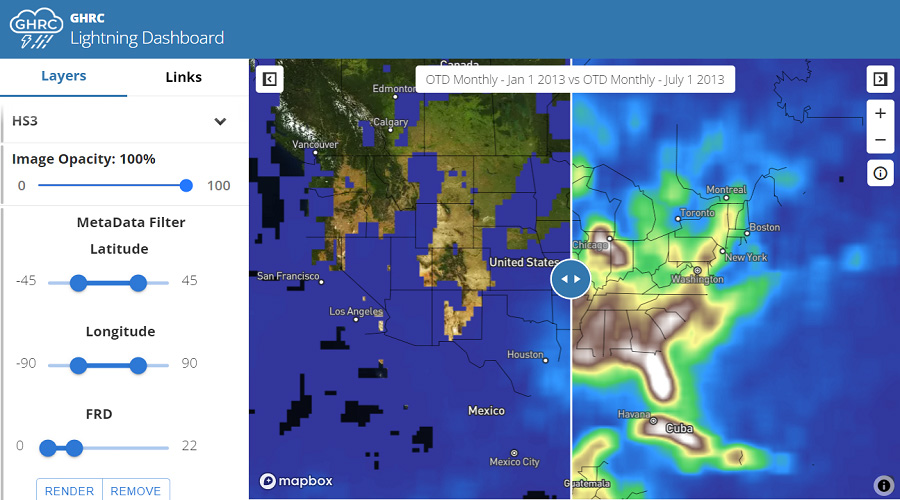
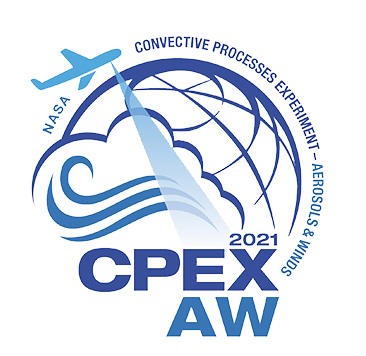 The Global Hydrometeorology Resource Center (GHRC) DAAC has completed archiving all datasets for the Convective Processes Experiment - Aerosols and Wind (CPEX-AW) field campaign. This clears the way to wrap up the older CPEX campaign that GHRC has received data for and to prepare for the incoming CPEX-Cabo Verde data.
The Global Hydrometeorology Resource Center (GHRC) DAAC has completed archiving all datasets for the Convective Processes Experiment - Aerosols and Wind (CPEX-AW) field campaign. This clears the way to wrap up the older CPEX campaign that GHRC has received data for and to prepare for the incoming CPEX-Cabo Verde data.
